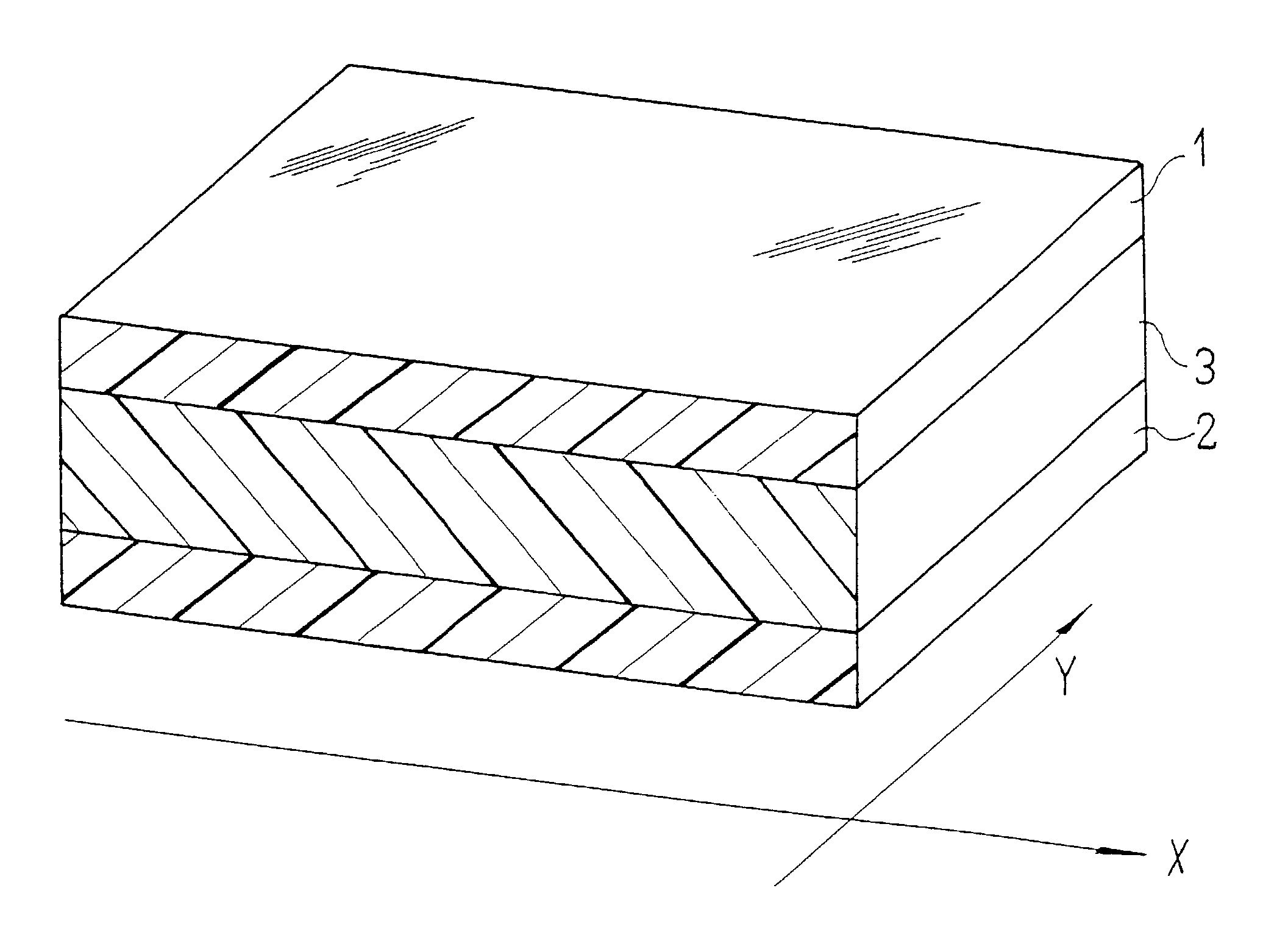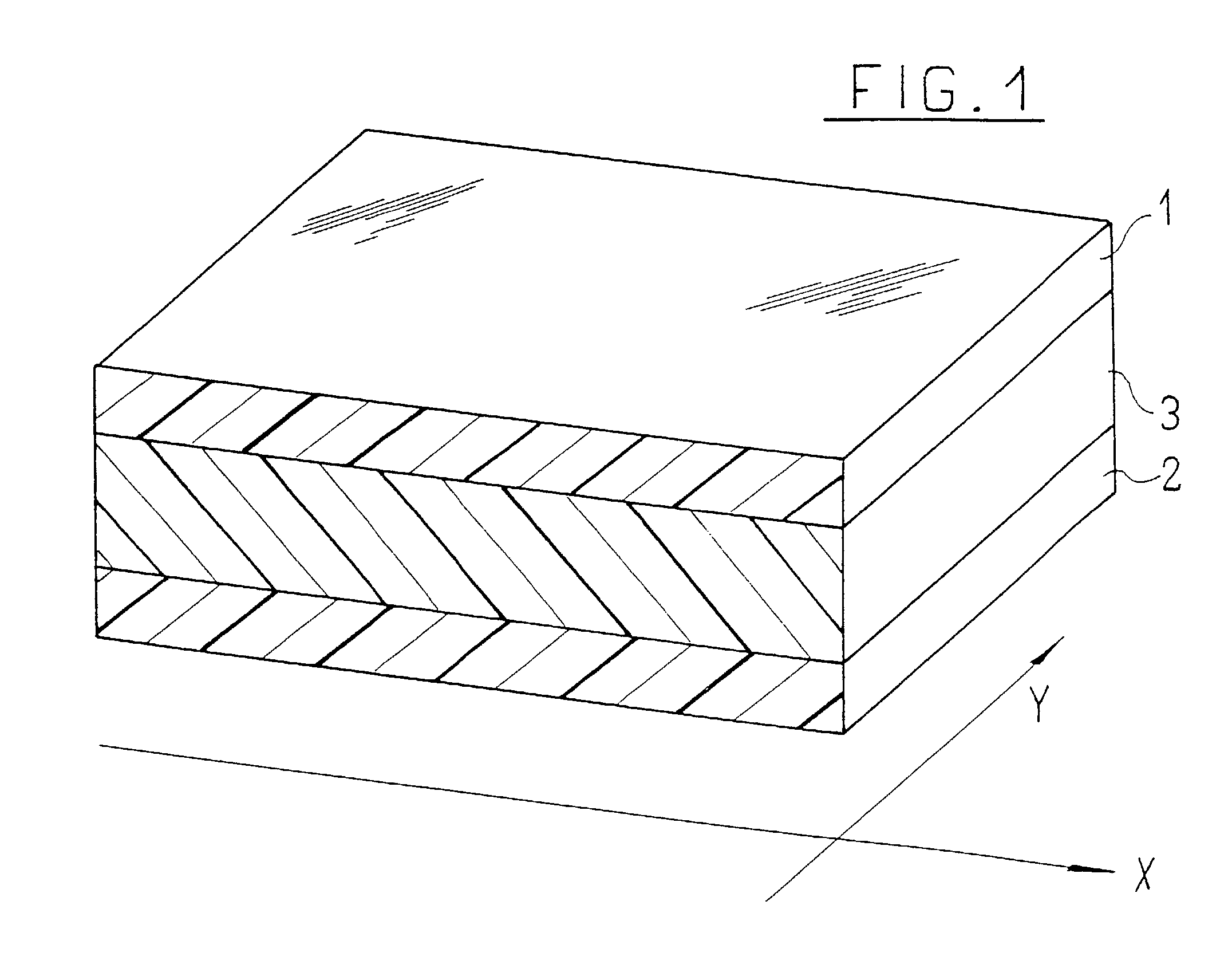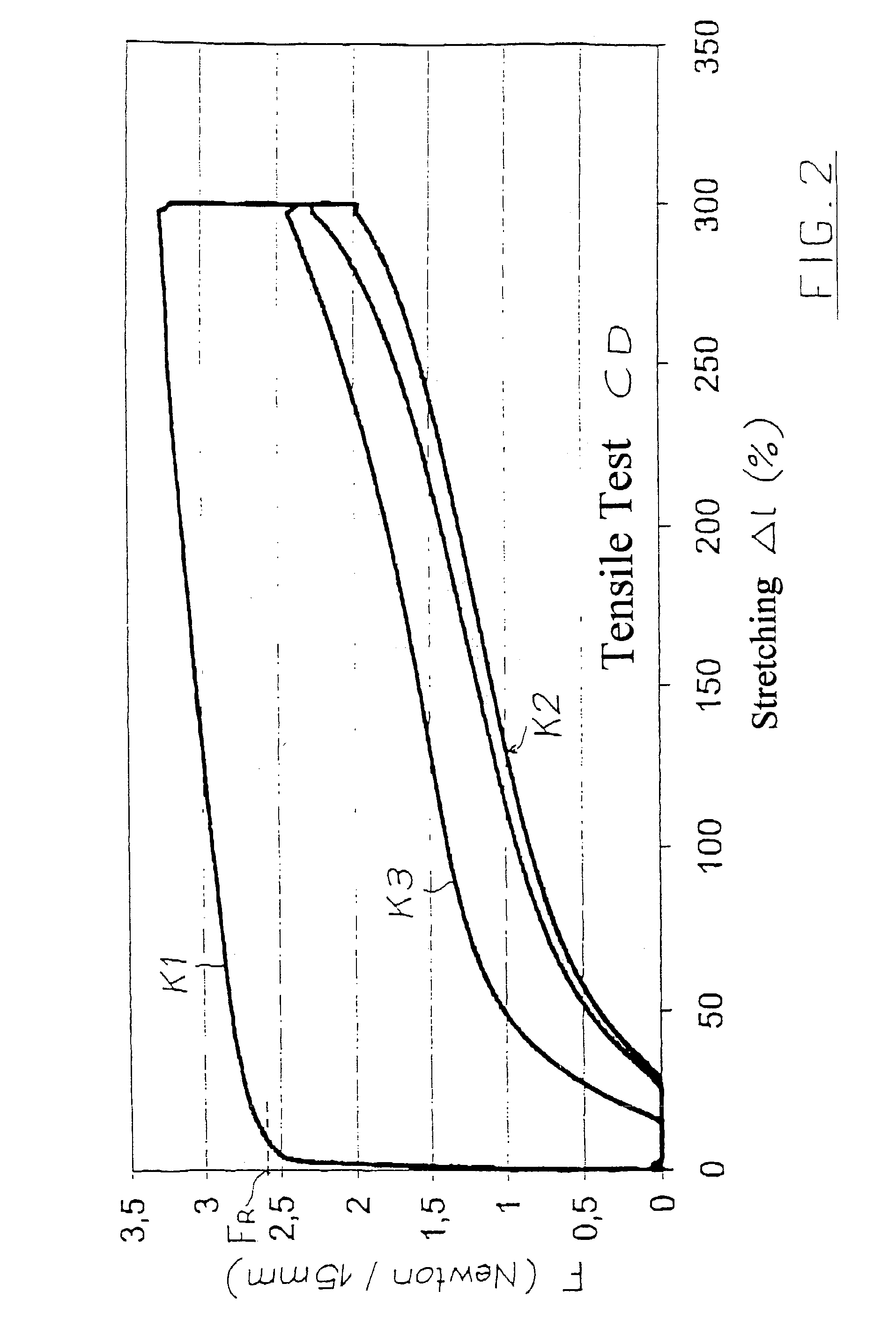Monoaxially elastic laminate film
- Summary
- Abstract
- Description
- Claims
- Application Information
AI Technical Summary
Benefits of technology
Problems solved by technology
Method used
Image
Examples
example 1
[0026]A three-layer laminate film with the following structure was co-extruded on a three-layer co-extrusion system. The skin layers each were made of polypropylene homopolymer with a density of 0.900 g / cm3 and a melt index of 2 g / 10 min at 230° C. and 2.16 kg. The layers were adjusted to a thickness of 24 μm.
[0027]The core layer was made of a styrene block copolymer that was capable of extrusion, namely a styrene isoprene styrene triblock with a styrene proportion of 18 wt.-% and a melt index of 7 g / 10 min at 200° C. and 5 kg. The thickness of the elastomer core layer was 400 μm. After the film was formed and cooled, it was monoaxially stretched in a roller stretching machine at a temperature of 148° C., in the machine running direction, in a ratio of 1:7, and subsequently cooled in a tempering machine, whereby it shrank by 20% of the extrusion length. In the third process step, the monoaxially oriented film was stretched in a ratio of 1:3, perpendicular to the machine running dire...
example 2
[0029]A film that contained a mixture of polypropylene and 30 wt.-% talcum in its two outside skin layers was extruded on a three-layer film blowing system. The grain size of the talcum was below 0.5 μm. The thickness of the outside layers was 5 μm, in each instance. The core layer of the film was made of a mixture of a styrene block copolymer (SIS triblock with a styrene proportion of 18 wt.-%) and ethylene vinyl acetate with 18 wt.-%, so that a melt index of 2 g / 10 min at 190° C., 2.16 kg resulted. The thickness of the core layer was 60 μm.
[0030]In a second production step, the film that was produced was cold-stretched in the crosswise direction at a temperature of 15° C., specifically at a stretching ratio of 1:5. After relaxation, a material was present that behaved in very stable manner in the machine running direction, and demonstrated a high degree of elasticity in the direction perpendicular to it. During a test with a tensile test machine, stretching of 185% was achieved in...
example 3
[0031]A multi-layer film with the following structure was co-extruded on a three-layer co-extrusion system. The core layer was made of a thermoplastic polyurethane with a Shore hardness according to DIN 53505 of 70 Shore A. The skin layers each were made of a mixture of HDPE (high-density polyethylene) with equal portions of polystyrene and ethyl vinyl acetate. The HDPE demonstrated a density of 0.960 g / cm3 and a melt index of 8 g / 10 min at 190° C., 2.16 kg. The polystyrene was a homopolymer with a melt flow rate of 18 g / 10 min at 200° C. and 5 kg. The ethyl vinyl acetate contained 25% vinyl acetate and had a melt index of 3 g / 10 min at 190° C. and 2.16 kg. The total thickness of the layers was 100 μm, the ratio of the layers being 1:8:1. The film produced was very stable in the machine running direction. In the crosswise direction, it was easily stretched by hand. Afterwards, it behaved in elastic manner in the crosswise direction.
PUM
| Property | Measurement | Unit |
|---|---|---|
| Fraction | aaaaa | aaaaa |
| Fraction | aaaaa | aaaaa |
| Fraction | aaaaa | aaaaa |
Abstract
Description
Claims
Application Information
 Login to view more
Login to view more - R&D Engineer
- R&D Manager
- IP Professional
- Industry Leading Data Capabilities
- Powerful AI technology
- Patent DNA Extraction
Browse by: Latest US Patents, China's latest patents, Technical Efficacy Thesaurus, Application Domain, Technology Topic.
© 2024 PatSnap. All rights reserved.Legal|Privacy policy|Modern Slavery Act Transparency Statement|Sitemap



